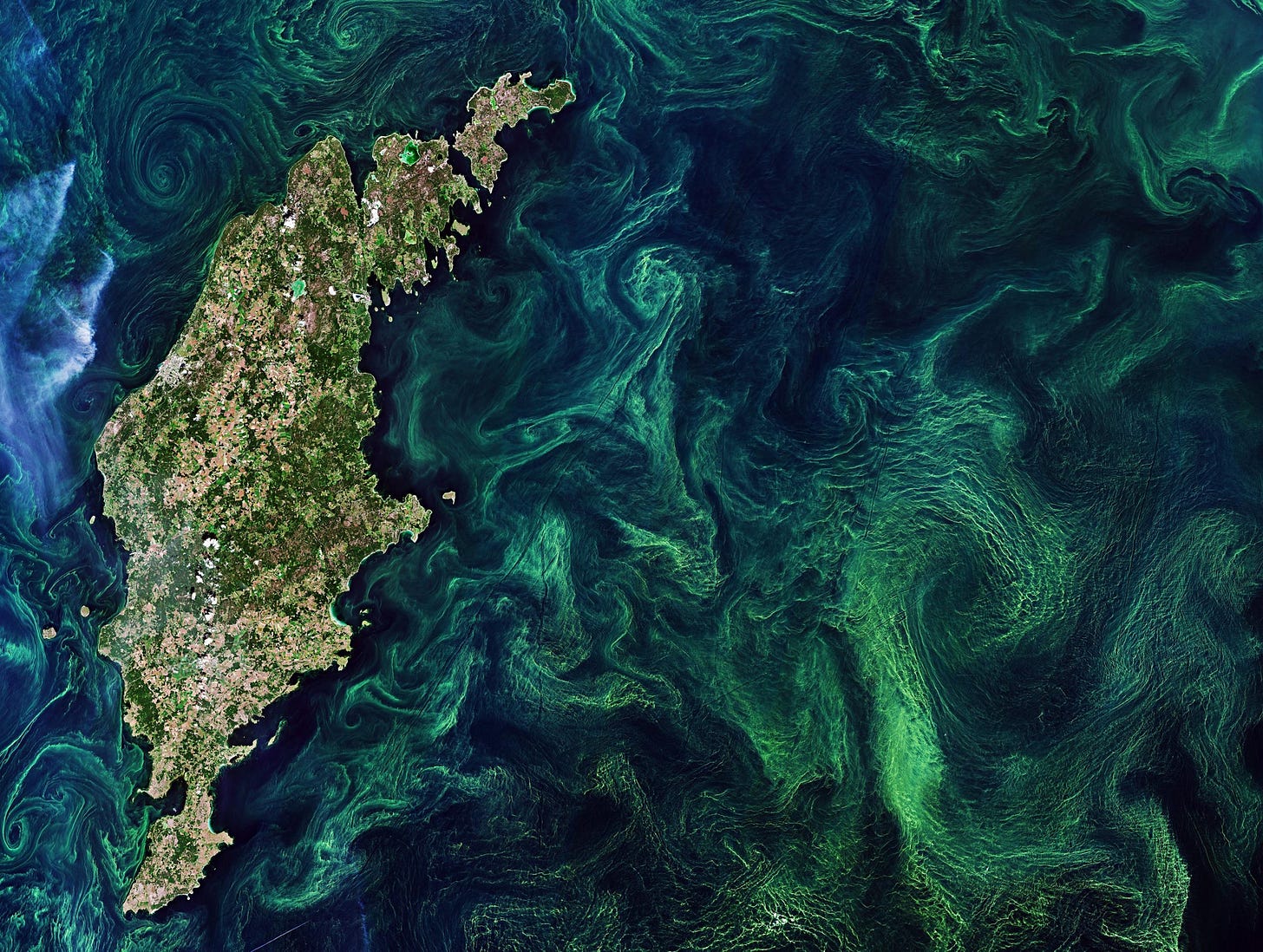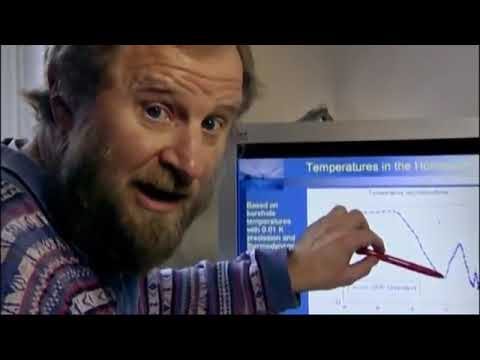'Climate change' or a Cover Story for human destruction of the environment (& more recently magnetic pole shift cover up?)
The global temperature varies over cyclical time periods - the current changes in weather are being blamed on 'global warming' due to 'fossil fuels', but is that the real story?
Is the planet getting hotter due to human activity? Or does the average temperature of the planet vary a lot anyway? Or vary by super extreme, hard to explain amounts, roughly every 12,00 years?
Yes, the planet’s average temperature has varied a lot over the eons. And, yes, the planet does have cyclical massive changes that are hard to explain without factoring in another larger astral body that has a perpendicular orbit passing near the Earth on a cyclical basis and getting much too close about every third cycle…but this post is not about that topic. Entire ‘poleshift’ in my Archives and a lot of posts will pop up.
A comment share:
“The ice has not forgotten how cold or warm it was on the surface at the time the snow fell.” - Jørgen Peder Steffensen, “a professor in ice core related research at the Niels Bohr Institute at the University of Copenhagen. Using ice core date, his team has reconstructed the last 10,000 years of climate history.” (video)
🚨PLEASE SHARE. 4 MINUTES LONG🚨—a comment by Phar Percheron, Iodine for Horses, 21 hrs ago.
Here is a shareable link to this excellent video. It seemed to be buried under 2,000 years’ worth of YouTube climate alarmist videos 😒
Climate Greenland Ice Research, United Australia Party, (4-minute video).
It is IMPOSSIBLE to say that it is human activity that has caused climatic warming. Yet the claim is being used to take EVERYTHING from you, from your money to your jobs to your freedom and your security.
“Around 1875 we have the lowest point in the last eight thousand years and that matches exactly the time when meteorological observations started.” -Jørgen Peder Steffensen, (video).
Of the many frauds perpetrated on the public in recent years this is the most far reaching and the hardest to dislodge. PLEASE SHARE.
Telegram channel for A. Bridgen: https://t.me/ABridgen
A post on peace-is-happy.org is pertinent - human increase in coal burning led to a change in air quality and appearance of the sky as long ago as the 1700s.
We are in a relay race - life, pass it on.
Updated: Oct 16, 2018
Love in the future
Locked in the past,
The key is the present
Creating change that lasts.
The actions we take today and those of yesterday are creating the future for humans and other life. Fossil fuels have been affecting the atmosphere since the beginning of the Industrial age and agricultural practices have been negatively affecting ground water and ocean water since the more recent switch to fossil fuel-based fertilizers.
Human effects on the environment were noted as long ago as 1745 when John Armstrong published The Art of Preserving Health, (line 322), a poetic essay on health. Some of the health tips he includes in it are to avoid the "turbid" city air and not having closed, stuffy space in order to have better air quality within the home:
YE who amid this feverish world would wear
A body free of pain, of cares a mind; (line 65)
Fly the rank city, shun its turbid air; Breathe not the chaos of eternal smoke . . . Let lofty cielings grace your ample rooms; And still at azure noontide may your dome
At every window drink the liquid sky.” (line 322)
- John Armstrong, The Art of Preserving Health, (1745).
Fresh air is healing, now, in 1745, and the question is whether our outdoor air quality will be healing in 2045.
Lofty ceilings would have been important with coal or wood fireplaces or stoves for heat. Depending on the type of climate in which a building is located architecture can make a difference in how easy it is to heat or cool a home or larger building.
For more information and a few resources regarding architecture for a more sustainable future see: "Passive Energy Buildings - building for a future with temperature extremes," (transcendingsquare).
Nature can be healing, possibly even from viewing images as it may help reduce stress levels for some individuals, but a walk in the woods may help more due to the fresh air and the essential oils from trees that provide a pine scent or other types of aroma. Other types of regular exercise can also be beneficial for reducing stress and improving the strength of the heart and lungs. The walk in the woods has been shown to have additional health benefits though.
See "Forest Bathing" for more details and links, and "Forest Bathing: for a healthy microbiome" for more forest images and information about the potential health benefits of a walk in the woods: (effectivecare/Glossary).
See the recent report by the United Nations Intergovernmental Panel on Climate Change (IPCC) for more information about industrial effects on the climate and long-term risks if we continue burning fossil fuels and using agricultural fertilizers made from fossil fuels at the same rate that we currently have been using them:
"Summary for Policymakers of IPCC Special Report on Global Warming of 1.5ºC approved by governments." (10 Oct 2018), (ipcc.pdf).
Links to various documents including the Special Report of Global Warming of 1.5'C: (ipcc.ch).
The NASA website has graphs visualizing the buildup in CO2 in the atmosphere over time: Carbon Dioxide - Vital Signs, Climate Change: Vital Signs of the Planet, (climate.nasa.gov)
Virtual tours of projects for adapting to climate change are available for a number of areas with a wide range of interesting strategies for building now for a more sustainable future, see: "As if you were there" 360' Demonstrations, USDA Climate Hubs, (climatehubs.oce.usda.gov)
We can see the Ocean Dead Zones as a color change to the water and we can see the risk happening as greenish algae blooms - mass growth from fertilizer run-off will be followed by a mass die-off which becomes food for bacterial decomposition species which don’t produce oxygen.
Swirling Green Algae Blooms in Baltic Sea Viewed From Space [Video], By European Space Agency (ESA), Dec. 18, 2019, (scitechdaily.com)

While ‘Climate Change’ has been used as a media and policy makers scare tactic, and financial scam with Carbon Tax Credits, humans are causing destruction of air, water, and soil. Desertification is happening to farmland and acidification and deoxygenation is happening to ocean waters. Coastal waters are the hardest hit for Ocean Dead Zones but there are also growing areas of low oxygen in the Baltic Sea and in other parts of the open ocean waters. Marine life swimming into those areas will suffocate if they can’t swim back out in time.
“Hot spots of dead zones around the world include the Gulf of Mexico, the Chesapeake Bay, and the Baltic Sea. The latter, a semi-enclosed body of water that lies between the Scandinavian Peninsula and continental Europe, has been called one of the largest dead zones in the world.” (eos.org, 2018)
Higher temperature of the water combined with excess nutrients are the main drivers of deoxygenation in the Baltic Sea. That inland body of ocean water has been settled by sea-faring peoples in all of the surrounding nations since very early days of European civilization . . . so human impact on the coastal areas has been happening there longer than in many other parts of the world.
“Unlike Medieval Climate Anomaly* dead zones, the study finds that modern-day hypoxia is driven by two main stressors: increased temperatures due to climate change and nutrient inputs from humans. “Only the higher temperatures combined with the excess nutrient levels were sufficient to cause the [seafloor] habitat loss of the last century,” said Virtasalo. Together, these factors have made for levels of coastal hypoxia that are unparalleled in the sediment* record.” (eos.org, 2018)
*It was unusually warm between 900 and 1350 CE and there was some coastal hypoxia (low oxygen) based on sediment molybdenum content (the trace mineral settles out of low oxygen water) but the interior, deeper areas of the Baltic Sea didn’t have evidence of low oxygen at that time.
Just How Anomalous Is the Vast Baltic Sea Dead Zone? “Newly drilled cores from the Baltic Sea reveal 1,500 years of deoxygenation history. The record sheds light on the dire state of the Baltic Sea today.” Read more: (eos.org), by Jenessa Duncombe, 30 July 2018.
This recent post is related, Ocean dead zones & agricultural phosphorus, (deNutrients.substack)
Some Peace-is-happy.org links got copied too:
Podcast links and transcripts: How are you feeling? This is a helpful audio series on how ‘feelings’ can be affected by physical factors rather than being only emotionally based. What we eat and do can affect whether we feel happy, anxious, or angry - it may not be the coworker or annoying neighbor after all.
The podcast site link: How are you feeling? Podcast
Peace-is-happy.org forum posts: TOPICS - six sections.
Blog: All Posts
Disclaimer: This information is being provided for educational purposes within the guidelines of Fair Use and is not intended to provide individual health guidance.








Great lookback on historical pollution. Especially the coal burning in the cities Which I think China is suffering from now.
The dead zones in the water - just awful. I wonder if they can eve. be fixed. In rivers the key is Submerged Aquatic Vegetation (SAV), which produces oxygen of course.
Hi Jennifer, love your work. May I suggest you do a little research re abiotic origins of oil? I no longer use the term ‘fossil’ fuels. Speaking of scams, the idea that oil came from ‘fossil’ fuels in limited supply well served the Rockefellers. Best, Diane https://agupubs.onlinelibrary.wiley.com/doi/full/10.1029/2008RG000270